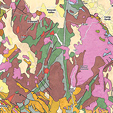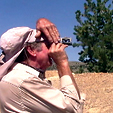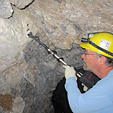How To
Using Geologic Maps
December 2015 by Chris Ralph
 In order to see what geologic maps can do, we need to think about what we are looking for.
In order to see what geologic maps can do, we need to think about what we are looking for.
The Fine Art of Panning Heavy Sands
The fine art of panning heavy sands requires a measure of patience. If you enjoy panning gold, you ought to enjoy this too, once you get the hang of it.
Dredging Tips and Tricks: A Measure of Water Pump Efficiency
…as an academic argument, when mated to the appropriate engine, is the pump really moving water at the rate of 400 GPM?
Simple Mine Surveying With Basic Hand Tools
 …there is an easy way to create a reasonably accurate map without any fancy instruments.
…there is an easy way to create a reasonably accurate map without any fancy instruments.
Using Vegetation and Soil Conditions as Prospecting Aids
Wouldn’t it be great if you could know if there is gold in the ground without setting foot on the ground? Well you can, to a certain extent, if you can recognize mined ground from unmined.
Sampling for Success—Part I
 All these decisions and more depend on the richness of a claim—something that is determined by sampling. But sampling isn’t cheap, and even collecting the samples can be more difficult than it appears on the surface.
All these decisions and more depend on the richness of a claim—something that is determined by sampling. But sampling isn’t cheap, and even collecting the samples can be more difficult than it appears on the surface.
Ask The Experts: Equipment to break up heavy clay
Q: I am looking for a “trommel machine” that doesn’t separate anything but clay slurry from rock hard clay.
Ask the Experts
What is the best type of mat to use in a high banker set up?
Subscription Required:
The Bawl Mill
• Our Readers Say
• Ask The Experts
• SB 838 and the Salem Witch Hunt
• Small-Scale Hard Rock Production
• Researching Mineralized Areas
• MMAC & PLP Update
• VLF Detector Operating Modes
• Canadian Company Recovers 1,111-Carat Diamond
• Lost Sally's Gold
• Time to File Claims in Southern California
• Colorado Disputes Key Part of EPA Mine Report
• Picking Our Way Through Bedrock
• Mining Stock Quotes and Mineral & Metal Prices
• Melman on Gold & Silver
Free:
Legislative and Regulatory Update
• What Is Incidental Fallback?







